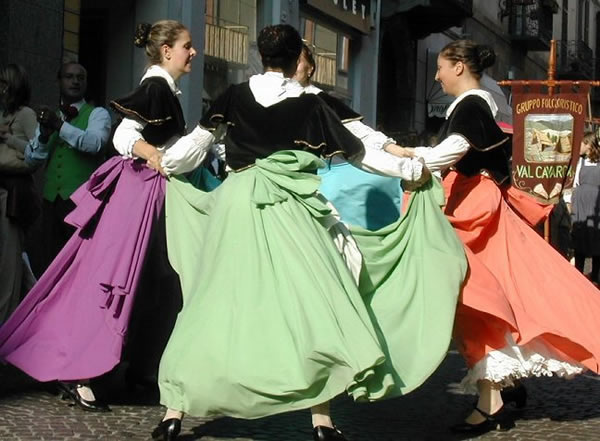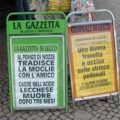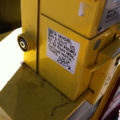From a family trip, the highlight of which (for me) was seeing the Lipizzaner stallions at the Spanish Riding School.
Born into It: Why You Can’t Become Italian
Most of the world’s major religions proselytize (for some, it’s a major facet of the faith), and eagerly accept converts. Except Hinduism. Hare Krishnas notwithstanding, you really can’t convert to Hinduism, because it is much more than a set of beliefs and practices. Hinduism is a system that you are born into, a fixed hierarchy of families and castes. You are who you are because of your birth, and nothing can change that. Therefore, logically, anyone born outside the system must forever remain outside.
A non-Hindu can’t become a Hindu.By analogy, I’ve been wondering: can a foreigner become an Italian?
I don’t think so. Not in the same way that an immigrant to America becomes American. I think this has to do with the Italian concept of paese (hometown). You’re born into a paese, you grow up in it, absorbing its cultural and linguistic nuances, its history and traditions. “Italian” isn’t enough to define you; you’ve got to have a paese (and, often, a dialect) as well.
The attachment to paese begins early. Rossella has had trouble finding kids to hang out with after school, because most of her classmates commute to Lecco from smaller towns, where they already have firmly established social circles with whom they spend any leisure time left over from school and family. The frightening part (to me and Ross, anyway) is that, at age 14, they already consider themselves set for life, and will not move outside of their established places and groups unless forced.
They don’t get out, and no outsider (estraneo) gets in. This goes for other Italians as well. Italians who leave their paese to live elsewhere in Italy don’t fit in – they are not part of their new paese of residence, and never will be. One exception is Milan. I recently met an Italian who told me that, when he wanted to return to Italy after years abroad, he deliberately chose Milan as the most welcoming city in Italy, both to foreigners and Italian strangers.
Which is not to say that people in smaller towns are cold, far from it. My experience of the Lecchesi is that they are warm and welcoming and happy to have us here. But we’ll never be Lecchesi.
That’s okay with me. As a third-culture kid, I long ago resigned myself to never fitting in anywhere (except Woodstock). We have friends in Lecco whose company I enjoy, but these days I am expanding my social circles among expatriates. Interestingly, some Italians also seek out opportunities to socialize with expats, because they have themselves lived overseas and, as often happens to travellers from any country, find that they no longer quite fit in when they return “home.”
Apr 27, 2004
This article was widely read and responded to. One interesting thread came up on eGullet (I posted the article there at the invitation of one of the moderators), where some very knowledgeable people discussed the phenomenon in terms of Italian and European history.
You Want Me to Put that Where?!?
Cultural Differences in Medication Methods, US and Italy
There are cultural differences between Italy and the US even in seemingly small things, such as how medicines are administered. I got through a childhood of many, many medicines without ever using a suppository – except once. That once is still imprinted on my mind as one of the more humiliating, not to mention uncomfortable, experiences of my life. So I was unpleasantly surprised to find that suppositories were routinely prescribed for Rossella‘s childhood fevers. I guess the logic is that it’s easier to ensure that a small child gets the correct dosage that way, but it wasn’t fun for anybody.There are even adult-sized suppositories, though I’ve never heard of anyone actually using them. But then I don’t suppose that’s something you’d discuss in casual conversation…
The favored medicine format for adults is the bustina (little envelope), of a powder which is mixed with water, forming a fizzy and more or less palatable decoction. Beyond that, it’s plain old pills – none of these wimpy American capsules or gel caps, just swallow it down and quit complaining.
Then there’s my once new, now old, friend – the aerosol. This is a machine with a noisy little motor that compresses air. You attach a rubber tube to it, then a glass “nebulizer” into which you put liquid medicine. The final glass piece, connected by a rubber joining ring, can be a nasal “fork” (in two sizes), a mouthpiece, or a soft plastic mask that covers nose and mouth. The compressed air is forced through the nebulizer, where it mixes with the medicine to create an aerosol which you then breathe in – excellent for getting the medicine to where it’s actually needed for respiratory problems. A beneficial side effect, for people like me who often won’t sit still long enough to rest even when we need it, is that you are tethered to the machine for the half-hour that it takes to inhale all the medicine. But that’s a drawback when you have to treat a small child.
Because I am often clumsy and drop things, I was initially nervous of handling all that delicate-looking glass, but it turns out to be not as delicate as it looks, and in any case you can buy replacement parts at the pharmacy.
Another area of cultural difference in medicine is how you obtain it. It pays to make friends with your local pharmacist, because, once she learns to know and trust you, she will often let you have things that technically are supposed to be available only by prescription – very handy when you know exactly what you’ve got and how to treat it, but can’t get hold of your doctor to write the prescription.
You do eventually want to get the prescription so that you can get some money back. Most pharmacies will sell you something on an emergency basis, then refund your money when you come back with the official prescription form which allows them to charge it (in whole or in part) to the national health service.
Apr 27, 2004
Mike Looijmans says re. suppositories: “The Dutch words for those are many, and translate into things like “ass grenade”, “plug-in” and “stick-up”. I cannot even recall the official word for them…”
He and others rightly pointed out that they’re often used for children (and sometimes adults) when they might be expected to throw up any medicine taken orally.
Est, Est, Est
“A policeman called the deaths of six females and three males, all believed to be children of Marcus Wesson, the largest mass killing in the history of Fresno, Calif.” NYT
I should certainly hope so. Just how many mass killings have there been in Fresno?
The media’s obsession with superlatives has infected us all. We can no longer have just a heavy snowfall or rainfall or whatever – it has to be the heaviEST since… whatever date you can find. The biggEST terrorist attack in Europe since WWII. The longEST winning streak since 1997. The warmEST day since last Tuesday. Which makes every event seem more dramatic than most events actually are.
The Fanvid Phenomenon
I wrote some time ago about the phenomenon of fan fiction , where fans make up their own stories set in particular fictional universes. Although publishers and copyright guardians are uneasy about the phenomenon (especially because many of the stories are sexy), I feel that the creators of these fictional worlds should feel highly complimented. Writing really good fan fiction requires a tremendous amount of knowledge and sympathy for someone else’s creation – it’s a sign of truly dedicated fandom, and a very sincere form of flattery.
Technology has now enabled fans to take things one step further: fan music videos. Fans take clips from a beloved TV series or film, and weave them together using a favorite song as a soundtrack. Some are funny, some poignant, some epic. Vids can explore single characters, or relationships among pairs of characters – relationships obvious in the original material, or imagined by the video creator (vidder). Yes, there are slash vids, too – it’s amazing the spin you can put on material by clever editing.
It’s a lot of work to make these vids. The vidder must get the source material into a format she can work with, often by copying and converting clips from DVD. Then she must trim it down to the scenes she needs, and edit it all together to fit with the music. The professionalism of the editing is often astounding, considering that most vidders probably don’t edit video for a living, and they don’t earn anything for all this hard work. Though it might be great practice for a film editing career. I’ve been tempted to make a vid myself, but so far have not found the right combination of tools (and time!).









